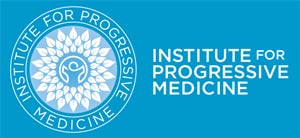Adequate vitamin D levels are best achieved by supplements because of the side-effects of UV exposure, says the results of a new computer simulation model from the US.
We can produce vitamin D in our skin on exposure to sunlight, but the merits of getting the supplement via sunlight or supplements is a source of ongoing debate.
In the US, where over 1.5 million people are diagnosed with skin cancer every year, experts are pushing supplements, claiming recommendations for sun exposure are “highly irresponsible”.
Computer science
Scientists from the Memorial Sloan-Kettering Cancer Center in New York and the Norwegian Institute for Air Research in Tromsø used a computer model to determine optimal sun exposure times to produce blood levels of vitamin D3 equivalent to 400 or 1000 IU of vitamin D.
The researcher chose two geographical sites Miami, FL, and Boston, MA for their simulation and selected four months January, April, July, and October.
Data showed that in summer in Boston, people would need between three and eight minutes of sunlight exposure to about 25 per cent of their body surface to synthesise 400 IU of vitamin D. In winter, the simulation indicated that it would be difficult to produce any vitamin D in Boston. No such problems were calculated in Miami, however, with between three and six minutes needed to produce 400 IU at all times of the year.
There are many limitations to these models, and clearly the estimates are only rough approximations, said the researchers. Although it may be tempting to recommend intentional sun exposure for a few minutes several times a week, cutaneous vitamin D synthesis is an intricate process and depends on numerous variables.
Even in a simplified model such as the one used here, it can be seen to vary considerably by geography, season, and skin type. Furthermore, even if a more accurate and practical model were developed, titrating ones own exposure to sunlight is difficult, if not impossible.
Because of these practical difficulties combined with the detrimental side effects of UV exposure, we endorse the IARC assessment that even if it is ultimately demonstrated that increasing vitamin D levels impacts cancer and chronic disease, oral supplements of vitamin D would probably represent the safest way to increase vitamin D status, concluded the researchers.
D details
Vitamin D refers to two biologically inactive precursors – D3, also known as cholecalciferol, and D2, also known as ergocalciferol. Both D3 and D2 precursors are hydroxylated in the liver and kidneys to form 25- hydroxyvitamin D (25(OH)D), the non-active ‘storage’ form, and 1,25-dihydroxyvitamin D (1,25(OH)2D), the biologically active form that is tightly controlled by the body.
An ever growing body of science supports the benefits of maintaining healthy vitamin D levels. In adults, it is said vitamin D deficiency may precipitate or exacerbate osteopenia, osteoporosis, muscle weakness, fractures, common cancers, autoimmune diseases, infectious diseases and cardiovascular diseases. There is also some evidence that the vitamin may reduce the incidence of several types of cancer and type-1 diabetes.
Source: NutraIngredients.com
